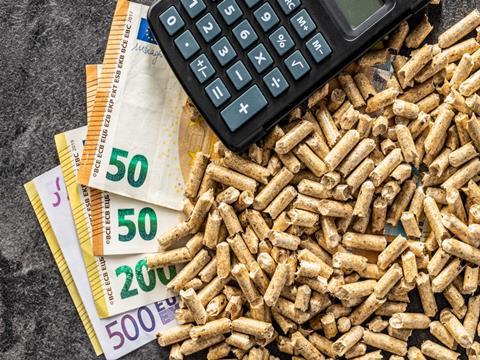
Energy prices are rising to the extreme and companies are struggling to keep up with the costs – could they be forced to abandon their sustainability goals to keep themselves afloat? Mark Victory, senior editor, Recycling at ICIS, walks us through the current financial landscape of the packaging industry.
The only current certainty in the European recycling chain is uncertainty. Uncertainty typically leads to nervousness, which in turn leads to volatility as markets react strongly to fluctuations in underlying conditions.
This uncertainty has come at a time when the chain would traditionally be looking to its projected volumes in the coming year. Many players across the recycled polymers chain have said that planning ahead is simply impossible in the current climate.
On one hand, macroeconomic conditions are weak and there is a growing threat of recession across Europe. Demand from non-packaging grades has fallen sharply in September across all recycled polymers – particularly demand from the key construction sector.
Comparatively, low virgin values are also encouraging a shift away from recycled materials in non-packaging grades – which typically work on a cost-saving basis – while high energy costs have limited recyclers’ ability to reduce flake and pellet prices without risking negative margins.
Geopolitical shifts remain unpredictable given the ongoing conflict in Ukraine. Energy prices, and government measures to tackle them, also remain difficult to forecast.
On the other hand, sustainability commitments from the packaging sector remain high, and there has been no real slowdown in the consumption of packaging for the time being.
The gap between the sustainability commitments of fast-moving consumer goods (FMCG) – many of which are due to be reached in 2025 – and available supply has seen recycled polymer markets decouple from virgin price movements and macroeconomic conditions in all packaging-dominated grades over the past few years.
Structural shortages are likely to become even more endemic if negative macroeconomic conditions persist – which seems probable – because this is likely to lead to greater hesitancy in investment. As such, rumours that some FMCG producers are beginning to reassess their sustainability commitments have only increased.
One major FMCG provider confirmed this week that it was already having internal discussions with its finance department on whether it should abandon its goals. Concerns over mid-term availability if it were to step out of the market, and the favourability of deals if it stepped back in, have convinced the company to stick with recycled material for the moment. Discussions are expected to intensify should the macroeconomic situation significantly worsen.
High energy costs also bring the risk of potential bankruptcies in the chain, which would make sustainability targets increasingly even harder to achieve, as industry association Packaging Recyclers Europe (PRE) warned on 22 September.
The recycling industry typically operates on narrow margins and smaller cash reserves, placing it at greater risk of bankruptcy in any sustained downturn. Currently, the market is faced with the spectre of rising costs and falling demand.
According to a PRE survey, average energy costs for recyclers have increased from a typical level of around 15-20% of production costs – minus labour and maintenance – to a current average level of 70%. The most energy-intensive part of the recycling chain is typically the conversion from bales to flakes and pellets. Nevertheless, waste managers and sorters have also seen rising costs due to escalating electricity prices.
Energy costs remain a significant challenge for flake and pellet producers, and many have already switched to short-time working. Prices vary depending on individual countries’ energy mixes and individual producers’ contract terms. This is creating significant disparity between players in the recycling chain, leading to increased regionalisation of prices and widening ranges depending on individual seller storage and cash flow position, along with individual energy costs.
In short, companies having to free up storage space, or needing to generate cash flow, are currently more likely to sell at low values, while those with storage space and more secure balance sheets are preferring to sacrifice volume over price. This is especially true of many sellers who do not believe that lower prices in current conditions will stimulate volumes.
While waste managers have not seen energy cost rises to the same extent as those seen in flake and pellet production, costs in that sector have also increased, as have logistic costs.
Storage space, however, might be a bigger challenge for waste managers than those further down the chain. This is because, while flake and pellet producers have the option to turn down operating rates waste or store material long-term – providing they can absorb the cost of storage – waste will continue to enter the system.
This means that, at some point – and many believe that point is fast approaching – waste managers will need to either offload material or send it for incineration or landfill.
In the short-term, market signals point to volatility and regionalisation. For many, without support, the remainder of 2022 may bring extreme financial hardship. Any rationalisation in the chain or drop in sorely needed investment risks further threatening circularity goals.
Buyers looking to contract volumes for next year face a tough calculation; a deep and protracted recession risks companies becoming stuck with high inventories; a less severe downturn or market recovery risks a repeat of the kind of shortages seen in the first half of 2022. Those that step back completely risk re-entering the market on unfavourable terms, or lacking access to it entirely


















No comments yet